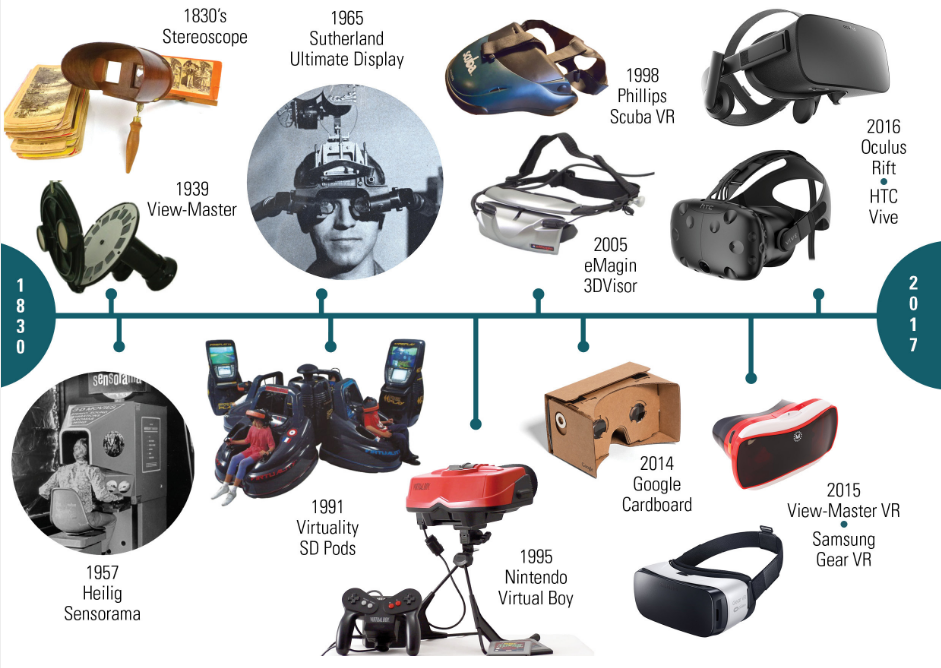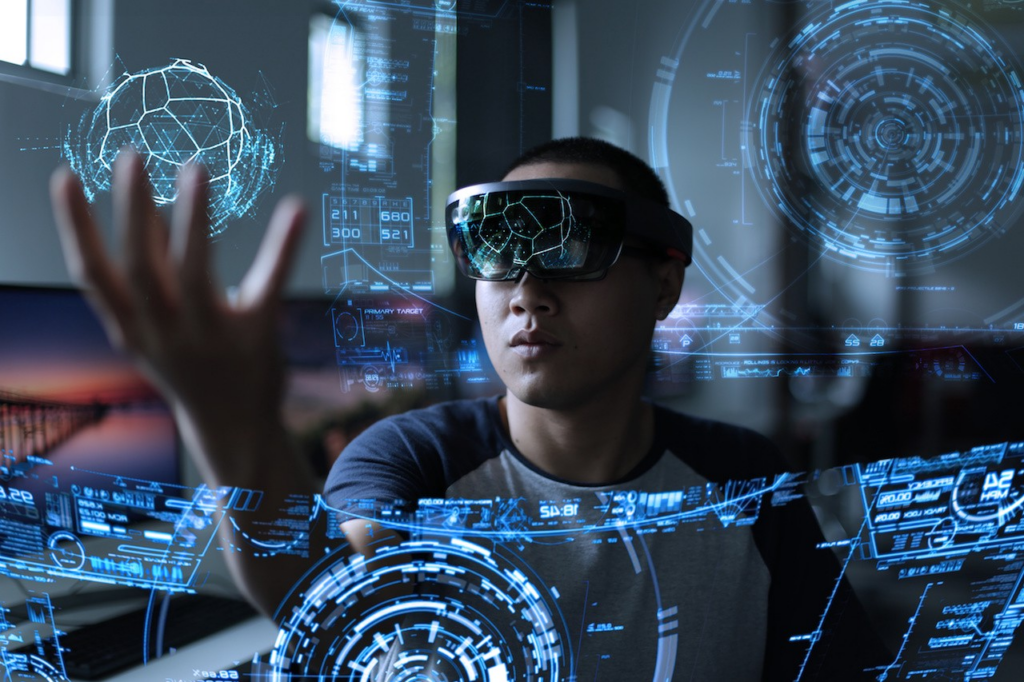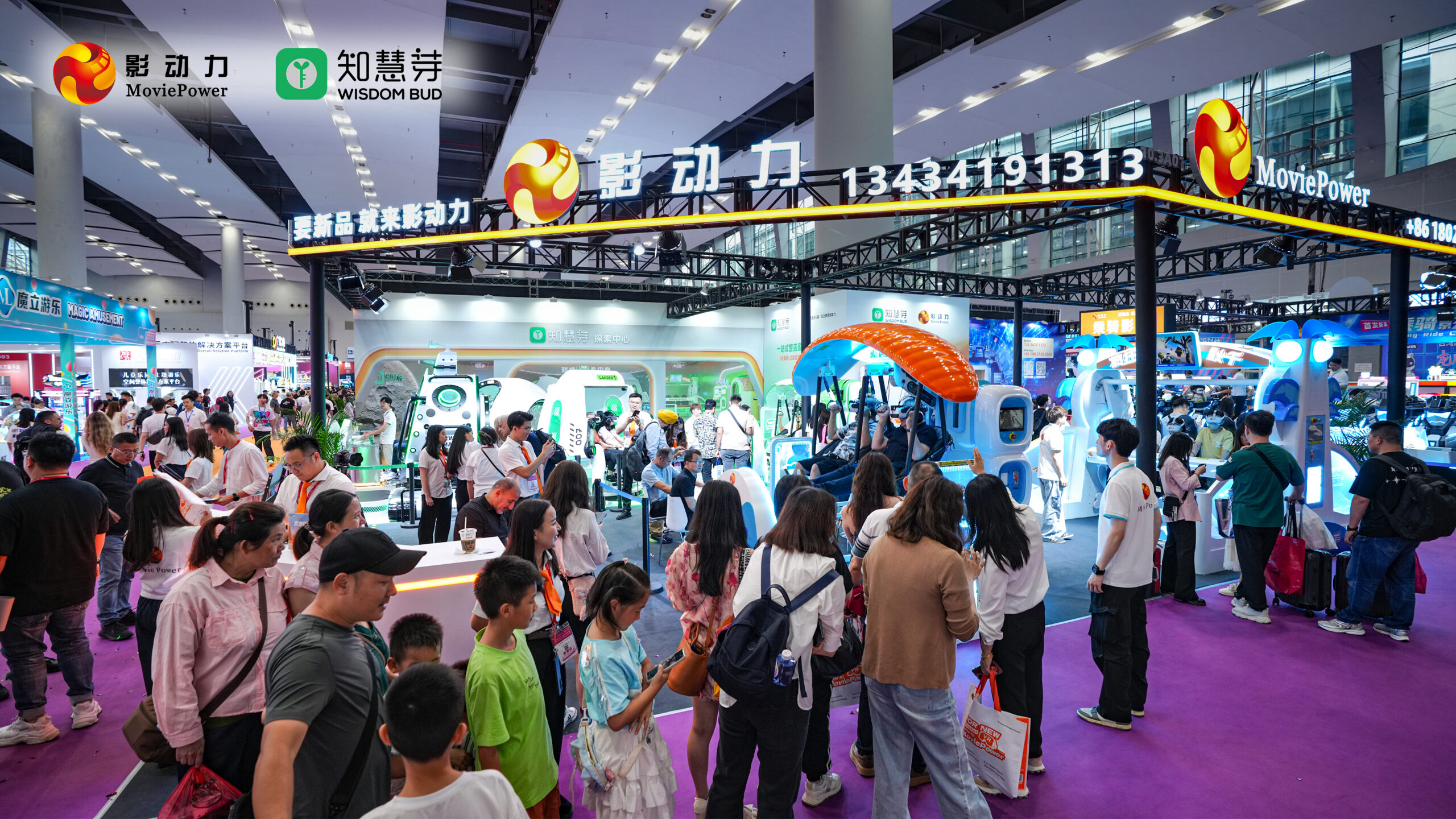
مصدر: https://بيكساباي.كوم/
اليوم, الواقع الافتراضي متاح على نطاق أوسع من أي وقت مضى. ولكن حتى بعد مرور ست سنوات على وصول الواقع الافتراضي للمستهلك إلى السوق لأول مرة, لا يزال هناك الكثير من الأسئلة التي لم تتم الإجابة عليها للمبتدئين. هناك الكثير من الكاذبة (أو حتى التضليل عمدا) المعلومات تطفو على السطح لأنها لا تزال تكنولوجيا متخصصة. لمسح اللغز الخاص بك حول الواقع الافتراضي, نحن نقدم لك المعلومات الأساسية المتعلقة بالواقع الافتراضي في دليل الواقع الافتراضي الخاص بنا.
ما هو الواقع الافتراضي?

مصدر: https://بيكساباي.كوم/
مختصر والمعروف باسم VR, الواقع الافتراضي يستخدم تتبع الوضعية وشاشات العرض ثلاثية الأبعاد القريبة من العين لتزويد المستخدمين بإحساس غامر بالعالم الافتراضي. وله تطبيقات في مجال الأعمال, تعليم (مثل التدريب الطبي أو العسكري), والترفيه (وخاصة ألعاب الفيديو). وبصرف النظر عن الواقع الافتراضي, تشمل الأشكال المختلفة الأخرى للتكنولوجيا الواقع المعزز والواقع المختلط, يُعرف أحيانًا باسم الواقع الممتد أو XR, لكن, ولا تزال التعاريف تتطور مع تطور المجال.
لتوفير صور نابضة بالحياة, يبدو, وغيرها من الأحاسيس التي تحاكي التواجد الفعلي للمستخدم في العالم الافتراضي, تستخدم أنظمة الواقع الافتراضي القياسية الحالية إما سماعات الواقع الافتراضي أو بيئات العرض المتعددة. يمكن للمستخدم رؤية العالم الافتراضي, التحرك فيه, والتفاعل مع الميزات أو الكائنات الافتراضية أثناء استخدام تقنية الواقع الافتراضي. يمكن أيضًا إنتاج الانطباع من خلال غرف مبنية خصيصًا تحتوي على العديد من الشاشات الكبيرة, على الرغم من أنه يتم إنتاجه في أغلب الأحيان بواسطة سماعات الرأس VR التي تحتوي على شاشة مثبتة على الرأس مع شاشة صغيرة أمام العينين. يتضمن الواقع الافتراضي عادةً تعليقات صوتية ومرئية, لكن التكنولوجيا اللمسية قد تتيح أيضًا أنواعًا إضافية من ردود الفعل الحسية والقوة.
اختراع ونمو تكنولوجيا الواقع الافتراضي

مصدر: https://www.pinterest.com.au/
على الرغم من الواقع الافتراضي (الواقع الافتراضي) قد يبدو للبعض وكأنه جديد تمامًا, التكنولوجيا المتطورة, لقد كانت موجودة منذ أكثر من ذلك 60 سنين! لقد مهد تاريخ الواقع الافتراضي والمساهمين فيه الطريق للمتعة المذهلة التي نتمتع بها اليوم.
في 1957, من أجل توفير تجربة غامرة, قام مورتون هيليج بإنشاء جهاز سينسوراما. تطلبت هذه المحاكاة الواقعية على طراز الممرات من المشاهد الجلوس أمامها ورأسه بين لوحتين ومشاهدة الرسومات ثلاثية الأبعاد أثناء التعرض لأصوات وروائح محددة. لقد تم الاعتراف بـ Sensorama على نطاق واسع كأول أداة للواقع الافتراضي, على الرغم من أنه ليس الواقع الافتراضي الفعلي كما نعرفه اليوم. تم توفير الأنواع العديدة من سماعات الواقع الافتراضي للجمهور, تتراوح من EyePhone إلى Samsung Gear VR, أغطية الرأس الأكثر شهرة, أظهر كيف تقدم الواقع الافتراضي حتى في الآونة الأخيرة.
أين يمكننا أن نتوقع رؤية تكنولوجيا الواقع الافتراضي؟

مصدر: https://www.istockphoto.com/
الألعاب & ترفيه
مع تطبيق الواقع الافتراضي على الألعاب والترفيه, لقد وجد الناس من جميع الأعمار استرخاءً وبهجةً عظيمتين. مع مجموعة متنوعة من أغطية الرأس, يمكن تطوير المحتوى الديناميكي وتقديمه, إشراك اللاعبين بتفاعلات جديدة ومحسنة. فيما يلي بعض التطبيقات المعروفة للألعاب والترفيه:
ألعاب VR من منظور الشخص الأول
واحدة من أكثر الأنواع المحبوبة على منصة الواقع الافتراضي هي ألعاب إطلاق النار من منظور الشخص الأول. عشاق الألعاب’ يمكن تعزيز الرغبة في اللعب لفترات طويلة من الوقت من خلال تجربة التواجد المناسب في ساحة المعركة من خلال حواسهم البصرية والسمعية..
العاب سباق الواقع الافتراضي:
هذا النوع من الألعاب مليء بالرسومات المتطورة والخالية من العيوب التي تسمح للاعبين بتوقع متعة اللمس مثل الجزء الداخلي للسيارة.
الآن في العديد من مجمعات التسوق ومراكز التسوق, من المرجح أن يكتشف الزائرون بعض محاكيات الواقع الافتراضي التي تقدم ألعاب سباقات الواقع الافتراضي مثل دراجات نارية الواقع الافتراضي و محاكيات السفينة الدوارة, معدات الواقع الافتراضي الأكثر انتشارًا. نظرًا لتجربة الواقع الافتراضي التي لا مثيل لها وزيادة إمكانية الوصول إليها موردي الواقع الافتراضي, قامت العديد من الأروقة أيضًا بترقية أجهزتها إلى محاكيات الواقع الافتراضي.
العاب رعب:
تتمتع ألعاب الفيديو المرعبة بميزة جديدة مع الواقع الافتراضي. الرسومات الواقعية جعلت طريقة اللعب أكثر رعبًا ورائعة. يتضمن هذا النوع الآن وجهة نظر من منظور الشخص الأول بالإضافة إلى الصوت المستند إلى الكائن, 360-وجهات النظر درجة, والإدخال اللمسي بفضل سماعات الواقع الافتراضي عالية الدقة.
طريقة جديدة للتسوق
لقد استفاد المستهلكون وتجار التجزئة بالفعل من الواقع الافتراضي في تجارة التجزئة. لقد تغيرت توقعات المستهلكين في المتاجر الفعلية بشكل لا رجعة فيه من خلال التسوق عبر الإنترنت، والآن يعيد الواقع الافتراضي تعريف التسوق عبر الإنترنت ويعيد تشكيل مشهد البيع بالتجزئة. يمكن للواقع الافتراضي أن يعزز التعرف على العلامة التجارية والمشاركة فيها بعدة طرق مختلفة.
أولاً, يمكّن الواقع الافتراضي المستهلكين من تصفح متجرك وهم مرتاحين في منازلهم, عينة من المنتجات الخاصة بك, وجرب الملابس, ماكياج, إلخ. يمكن للمستخدمين قضاء المزيد من الوقت في التصفح والتواصل مع علامتك التجارية لأنهم لا يضطرون إلى مغادرة موقعهم الحالي أو الانتقال فعليًا. التالي, يمكن للشركات المبتكرة أيضًا الاستفادة من الواقع الافتراضي لإنتاج محتوى أصلي وتنظيم أحداث حية افتراضية تحكي قصة علامتها التجارية, تزويد العملاء بالعروض الحصرية, وتفعل أكثر من ذلك بكثير. تتيح بيئة الواقع الافتراضي لشركتك فرصة أخرى للتفاعل مع العملاء.
تواصل
تتغير الطريقة التي ننقل بها القصص مع ظهور الواقع الافتراضي, 360-درجة فيديو غامرة, والتصوير الفوتوغرافي. ماذا يعني هذا بالنسبة للاتصالات المستقبلية, ثم? بدلاً من استخدام أوراق Excel ثنائية الأبعاد, المخططات الدائرية, والرسوم البيانية المرئية, يمكن للأشخاص تقديم البيانات باستخدام الواقع الافتراضي كنموذج متعدد الأبعاد على وسيط ثلاثي الأبعاد. يمكن للناس أن يتجولوا في البيئة التي تخلقها البيانات. ولنتأمل هنا أداة تصور شبكة الواقع الافتراضي التي طورها معهد التصنيع في جامعة كامبريدج. استخدام سماعة رأس VR وعناصر التحكم, تتيح أداة الواقع الافتراضي للمستخدمين تقييم شبكة سلسلة التوريد الخاصة بالشركة. تتجاوز قدرات الواقع الافتراضي التعليم من أجل الإثراء الشخصي.
غالبًا ما يُشار إلى إعداد المواقف من خلال الواقع الافتراضي على أنه ينتج ذاكرة أكبر من التدريب على الفيديو أو الطباعة, من التحكم في اندفاع العطلة إلى تنظيف الممرات. بالإضافة إلى ذلك, يقوم فريق Google Daydream VR الآن بالتحقيق في عدة خيارات لآلة صنع القهوة الافتراضية لتمكين خبراء صناعة القهوة من فهم تفاصيل واجباتهم دون أن تبلل أيديهم.
نظام المدرسة
مع المزيد من المدارس التي تتبنى التقنيات الجديدة, الواقع الافتراضي ينفجر في صناعة التعليم. يمكّن الواقع الافتراضي التلاميذ من السفر حول العالم دون مغادرة الفصل الدراسي على الإطلاق. تخيل السماح للتلاميذ بالتجول في أهرامات الجيزة أثناء جلوسهم على مكاتبهم. وقد أصبح هذا ممكنا بفضل الواقع الافتراضي في التعليم. التطبيق الأكثر شعبية من 360VR, شكل من أشكال الواقع الافتراضي, في التعليم. يتم تصوير أماكن العالم الحقيقي باستخدام كاميرات ومعدات متخصصة لهذا النوع من الواقع الافتراضي. بعد ذلك, يتم إرجاع اللقطات إلى الاستوديو لتحويلها إلى محتوى الواقع الافتراضي. في ما يشار إليه بالفصول الدراسية الغامرة, يمكن بعد ذلك رؤية محتوى الواقع الافتراضي على سماعات رأس الواقع الافتراضي أو عرضه على الجدران.
جيش
يتم استخدام الغرف الغامرة من قبل العديد من المواقع العسكرية الأمريكية لتثقيف قواتها. على سبيل المثال, ثكنات شوفيلد ومقرها هاواي’ نظام تدريب الفريق الافتراضي (VSTS) يستخدم وحدات تحكم الأسلحة اللاسلكية, نظام مراقبة لكامل الجسم, وشاشات عرض مثبتة على الرأس مزودة بأجهزة تتبع الحركة لمحاكاة الحجم, وزن, وشكل الأسلحة العسكرية الفعلية. يتعلم المشاركون مهارات الترابط والتأثير الذي يمكن أن يحدثوه على زملائهم الجنود في منصات الواقع الافتراضي هذه. تطبيق VR عسكري آخر يكمن في التدريب على الطيران. يتطلب تدريب الطيارين استخدام أجهزة محاكاة الطيران العسكرية. يمكن للطيارين في التدريب أن يتعرضوا بشكل آمن لأحداث العالم الحقيقي الصعبة وأن يتم إعدادهم لها باستخدام عمليات المحاكاة عالية الدقة. لتدريب الطيارين كاملة, يمكنك تراكب جهاز محاكاة الطيران مع بيئة افتراضية تمثل ساحة معركة حقيقية (يمكن استخدام TechViz Fusion لهذا النوع من محاكاة الواقع الافتراضي). لإعادة التدريب التجريبي بدقة, سيتم إثارة جميع حواس المستخدم.
لماذا الواقع الافتراضي هو المستقبل؟?

مصدر: https://Medium.com/
فيما يلي ثلاثة أسباب تجعل الواقع الافتراضي هو المستقبل وكيف, إن لم يكن بالفعل, وسوف تؤثر على حياتنا اليومية في المستقبل القريب.
1. إعداد أفضل وأسرع للموظفين
لا توجد العديد من الاستراتيجيات لتحسين أداء الموظفين وتسريع عملية التعلم. غالبًا ما يكتسب الناس المعرفة من خلال الخبرة, على الرغم من أن الأمر قد يستغرق سنوات قبل أن يتعرض العامل لظروف معينة في مكان العمل. وبحلول ذلك الوقت, أي تعليمات تتعلق بالمهارات الشخصية ربما تلقوها قد تم نسيانها تمامًا أو حفظها في مؤخرة أذهانهم. وهذا هو الوقت الذي قد تؤتي فيه أدوات التعلم الغامرة مثل الواقع الافتراضي ثمارها حقًا.
عندما يتم وضع الموظفين في بيئة رقمية, يمكنهم على الفور استخدام قدراتهم المكتسبة حديثًا وممارستها حتى تصبح طبيعة ثانية. يستفيد أصحاب العمل أيضًا من عمليات المحاكاة لأنها تقلل المخاطر وتوفر المال. النظر في هذا: تعد إدارة وإجراء التدريب باستخدام الواقع الافتراضي أكثر كفاءة من حيث الوقت. يمكن لأصحاب العمل أيضًا توقع الاستجابات مسبقًا وتصميم التدريب لتجنب أي مخاطر على العمال من خلال عرض ومراقبة الموظفين وردود أفعالهم في بيئات الواقع الافتراضي. وهذا يقلل المخاطر بشكل كبير ويزيد من إمكانية التوصل إلى حلول جديدة لأنه يمكن تقييم المفاهيم بسرعة في الإعدادات الافتراضية.
2. طريقة مختلفة للاختلاط والتعرف على الناس
هل تتذكر عندما كان الأمر مستهجنًا عند القيام بالمواعدة عبر الإنترنت? في الوقت الحاضر, يبدو أن استخدام تطبيقات المواعدة مثل Bumble أو مواقع التواصل الاجتماعي مثل Facebook هي الطريقة الوحيدة لمقابلة شريك أو أحد المعارف الرومانسيين..
لقد توسعت خياراتنا بشأن من وأين يمكننا أن نلتقي بفضل الإنترنت. يمكن لأي شخص أن يتواصل على الفور مع شخص ما في حيه أو يجري محادثة مع شخص ما في قارة أجنبية من خلال عدد قليل من النقرات والضربات الشديدة. اعتبر الواقع الافتراضي بمثابة المرحلة التالية في التفاعل مع الأشخاص الذين لا تعرفهم أو قضاء الوقت مع الأصدقاء. أشهر المنصات الاجتماعية المعتمدة على الواقع الافتراضي في الوقت الحالي هي VR Chat وRec Room, ويتم إنشاء المزيد باستمرار. من المشكوك فيه أن المزيد من اتصالاتنا الاجتماعية ستتم في العالم الافتراضي, على الرغم من أن الواقع الافتراضي لن يحل بالضرورة محل الطرق الهادفة التي نتفاعل بها مع الآخرين في العالم المادي – خاصة مع تزايد استخدام التكنولوجيا على نطاق واسع.
3. تعزيز التطور العلمي
يجلب الواقع الافتراضي قيمة عبر مجموعة متنوعة من الشركات, ولكن أحد المجالات التي يكون لها تأثير كبير بشكل خاص هو كيفية تعزيز العلوم. على سبيل المثال, هل تعلم أن الواقع الافتراضي يمكّن الباحثين, الأطباء, والعلماء للتعاون افتراضيًا في تطوير الأدوية مع أشخاص ليسوا حتى في نفس الغرفة? يمكن للخبراء الآن أن يتعاونوا مع زملائهم في جميع أنحاء العالم لإيجاد حلول سريعة للقضايا الملحة. ثم هناك مؤسسات ذات تفكير تقدمي مثل وكالة ناسا التي تتبنى الواقع الافتراضي للمساعدة في تدريب رواد الفضاء.
في الحقيقة, أعلنوا مؤخرا عن “تحدي ناسا MarsXR,” أ $70,000 مسابقة المكافآت مع منصة التعهيد الجماعي HeroX, من أجل جذب المطورين للعمل في بيئة واقع افتراضي جديدة تمامًا ستساعد في التحضير لمغامرات المريخ. لقد بدأنا للتو في خدش السطح لكيفية تغيير الواقع الافتراضي للعالم. لكن, فمن الواضح أنه مع مرور الوقت, لن يزداد ابتكار الواقع الافتراضي فحسب، بل سيصبح أيضًا في نهاية المطاف جانبًا شائعًا في حياتنا اليومية. في الحقيقة, قد يعتقد مارتي ماكفلي أننا نحن الذين نعيش في مجتمع مستقبلي.
متى سنرى قفزة أخرى في تكنولوجيا الواقع الافتراضي؟?

مصدر: https://www.dreamstime.com/
نظرًا للتقدم في التقنيات مثل الهواتف الذكية وتقنيات الإنترنت ومع ازدياد سهولة الوصول إلى الأدوات والتقنيات وأقل تكلفة, تشير غالبية الدراسات إلى ذلك سيتم رؤية إمكانات تقنية الواقع الافتراضي قريبًا – في نطاق 5 ل 10 سنين. على الرغم من وجود عقبات يجب التغلب عليها قبل أن يتمكن الواقع الافتراضي من تحقيق إمكاناته الكاملة, لقد رأينا أن المزايا التي تقدمها أثبتت إمكاناتها في المستقبل.
الوجبات الجاهزة الرئيسية

مصدر: https://cn.depositphotos.com/
على الرغم من أن الواقع المعزز والافتراضي سيواجهان بعض الصعوبات والقيود, إن المزايا التي يمكن أن تقدمها هذه التقنيات لمختلف جوانب حياتنا تتجاوز إلى حد كبير “سيء” وجوه. الشركات التي تدرك هذه الإمكانات وتستثمر في تطويرها حلول غامرة سيكون لها تأثير كبير على أداء الشركات, تحسين العملية, وتجربة العملاء.


英文.jpg)

